In the modern urban environment, parks and gardens not only provide a much needed visual break amidst the busy cityscape. Aiming to be unique destinations for culture and well-being, they offer spaces for a diverse range of year-round activities and events for city dwellers, simultaneously addressing important issues of following the principles of sustainable architecture and preserving biodiversity.

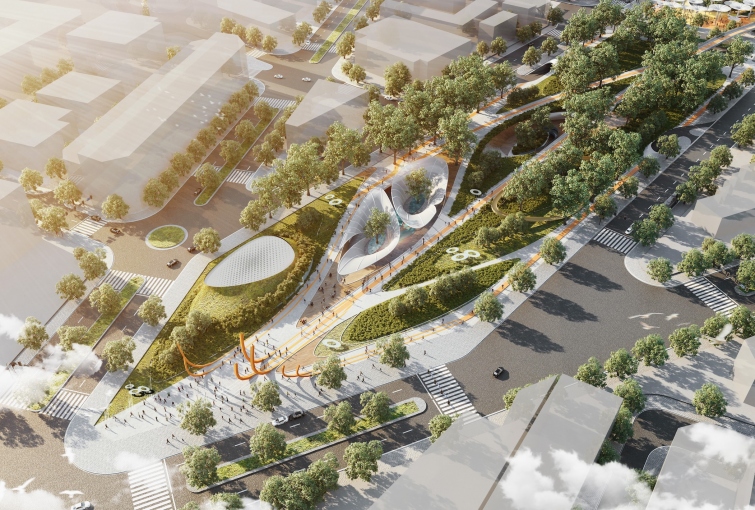
Central Park project for Ho Chi Minh City by LAVA and Aspect Studio (also header image)
LAVA, an architecture studio with offices in Sydney, Stuttgart and Berlin, collaborated with the landscape architecture firm Aspect Studio to develop a project for the Central Park in Ho Chi Minh City, Vietnam. The project has won the international competition that invited architects to transform the existing September 23 Park and construction is due to start in 2020.
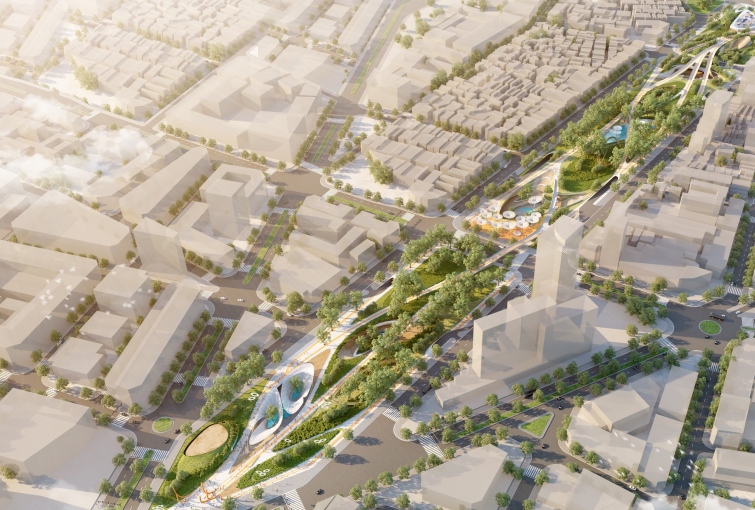
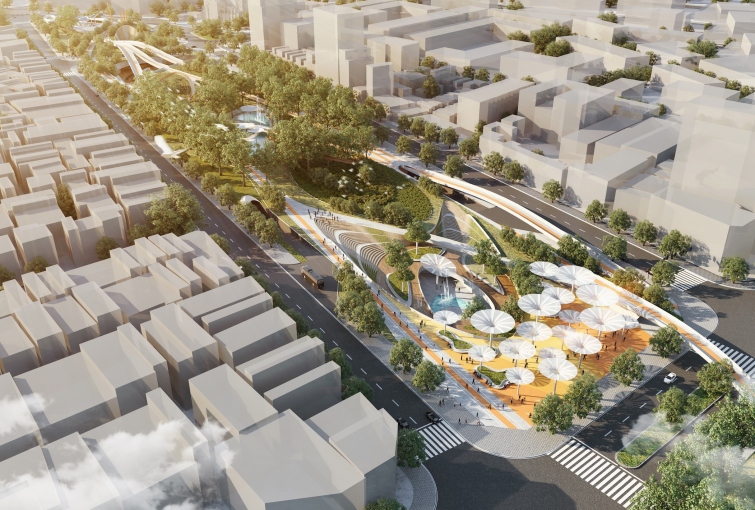
Central Park project for Ho Chi Minh City by LAVA and Aspect Studio
As the site was always about transportation, hosting south-eastern Asia’s first train station, the design references this history and future mobility. The concept of the 16-hectare multi-layered park will feature gently elevated undulating walkways and ramps that will replicate the position of the 19th century railway tracks built by the French, while the sunken gardens are designed to be used as performance and play spaces in a bid to make the park a day and night destination.

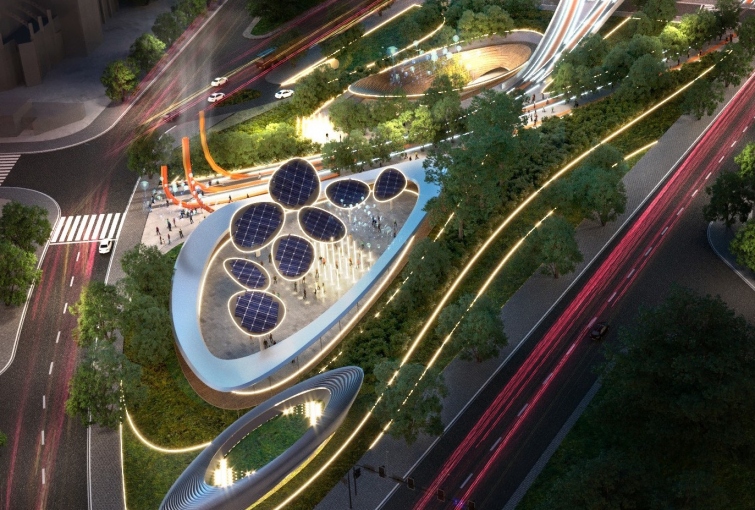
Central Park project for Ho Chi Minh City by LAVA and Aspect Studio
The metaphoric ‘railway lines’ remind visitors of the old urban fabric, provide directional paths, maximize the park’s existing greenery, and end with a dramatically twisting steel sculpture that further memorializes the transport history. They also connect to an underground shopping area linked to Ben Thanh, Vietnam’s first soon-to-be-opened metro station. The result is a world class park for the future which respects its past and culture.
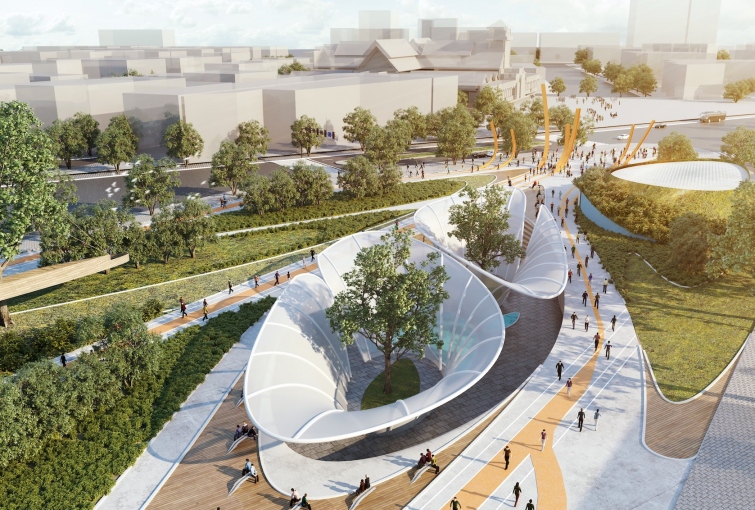

Central Park project for Ho Chi Minh City by LAVA and Aspect Studio
Artificial plants will complement the existing landscape as well as provide shelter and harvest water and energy. ‘Water purification’ trees are designed to collect rainwater, which will be then recycled and used for watering plants, drinking fountains and fire hydrants. ‘Ventilation trees’ are meant to reduce heat and create fresh air, while ‘Solar trees’ will feature solar panels, info screens, charging docks, and WIFI routers.

Central Park project for Ho Chi Minh City by LAVA and Aspect Studio
Other spaces of the park include a sculpture garden, an outdoor art gallery, water features, sport zones, playgrounds and music pavilions.

Loops and Lenses concept for La Brea Tar Pits by Weiss/Manfredi
New York studio Weiss/Manfredi has been selected to lead the master planning team to reimagine the park and museum accompanying Los Angeles’ historic La Brea Tar Pits, a group of asphalt lakes, created from tar that seeped up from the ground over a period of thousands of years, trapping and preserving the animals that lived on site. The competition to update the five hectare campus, which encompasses the world’s only active paleontological research site in a major urban area, was organised by the National History Museums of Los Angeles County (NHMLAC). The brief called for creating a more integrated experience of the museum and the landscape in Hancock Park while increasing community access, preserving the site’s iconic features and developing a more sustainable infrastructure for the next 50 years.
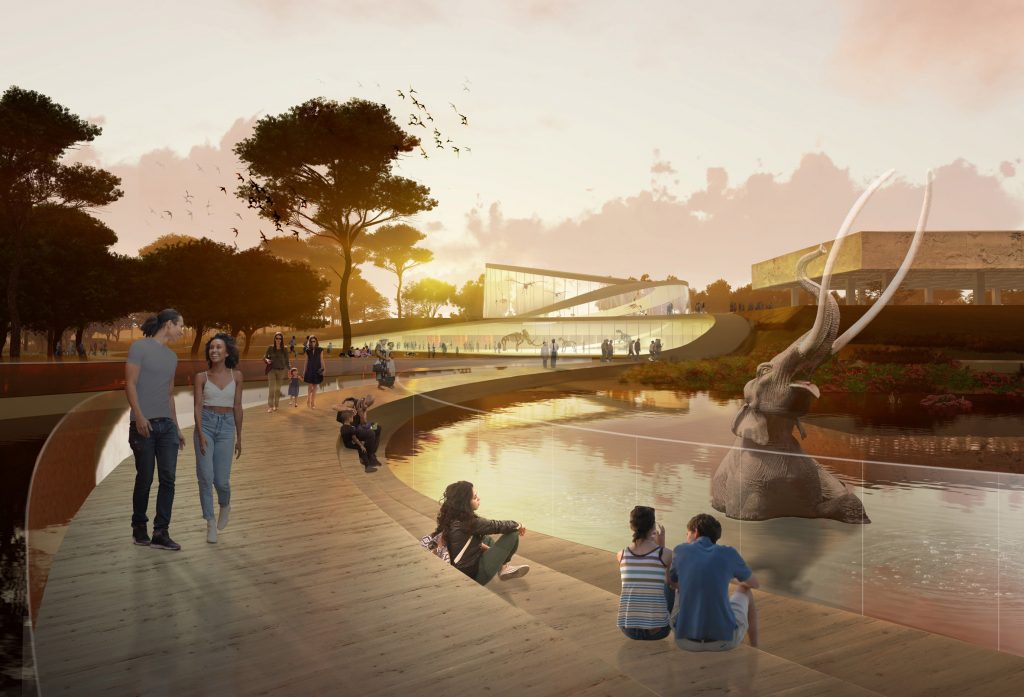
Loops and Lenses concept for La Brea Tar Pits by Weiss/Manfredi
In the Weiss/Manfredi’s winning proposal, titled Loops and Lenses, the focus is a one-kilometre long pathway that curves through the public park joining three distinct themes of the site, as an attempt to redefine the park as a continuously unfolding place of discovery.
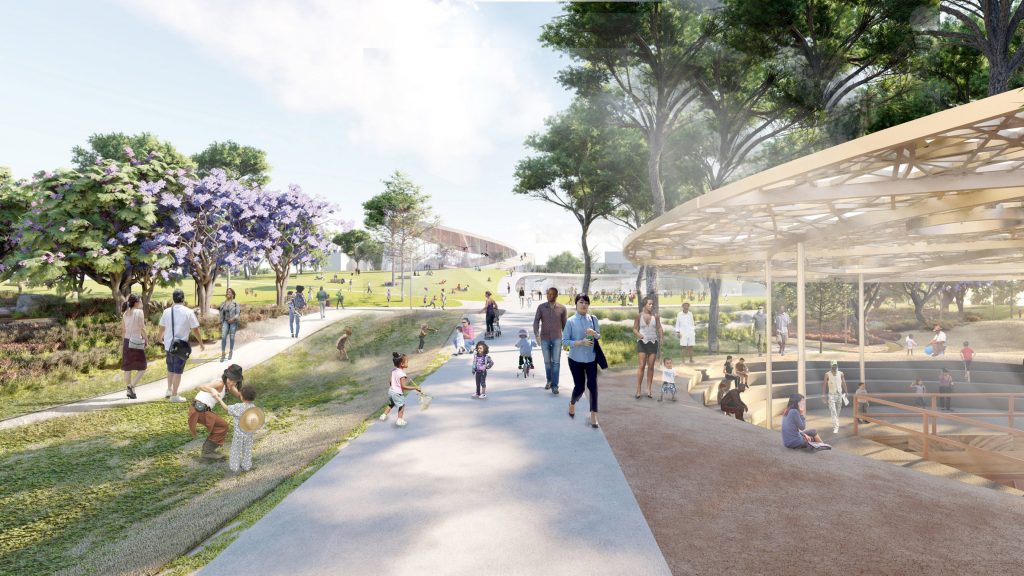
Loops and Lenses concept for La Brea Tar Pits by Weiss/Manfredi
The first theme, or loop, Research and Revelation, is defined by several active excavation pits, while the second theme, Community and Culture, occupies the central lawn where the Page museum which houses a vast collection of paleontological findings. The final theme, Spectacle and Urban Fiction, comprises the edge of the park where the lake pits meet the city street.
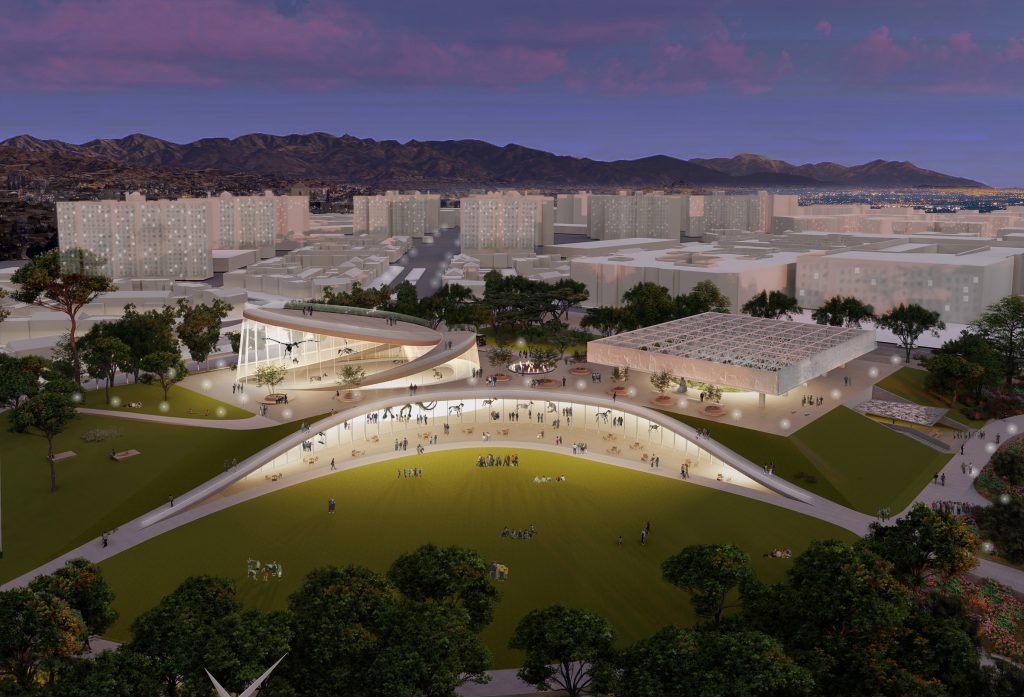
Loops and Lenses concept for La Brea Tar Pits by Weiss/Manfredi
The lenses are created correspondingly by framed views along the route, bringing into focus dig activity, the museum and sculptures of animals found on the site.
The proposed design of the museum’s extension provides more opportunities for recreation too: the beloved grass slope and rooftop terrace of the museum will be doubled in size.

The Bentway Toronto by Public Work and Greenberg Consultants (ph: Nic Lehoux)
Briefed to create various outdoor areas for year-round activities and events in the under-utilised space, Toronto firms Public Work and Greenberg Consultants have completed a new park underneath the city’s Gardiner Expressway, to provide “a vital artery for pedestrians and cyclists”. The Bentway is designed to link important attractions and destinations across Toronto.
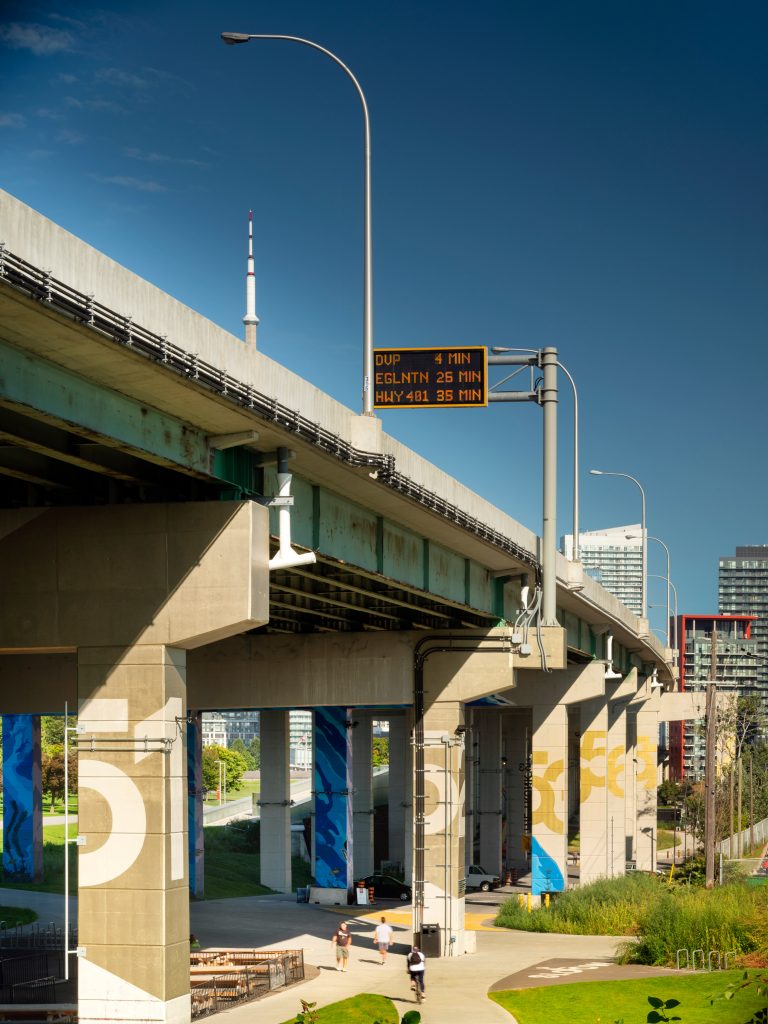
The Bentway Toronto by Public Work and Greenberg Consultants (ph: Nic Lehoux)
The starting point for the design was the series of concrete pillars supporting the expressway, called ‘bents’. Functioning either together or on their own, the bents create nooks for different outdoor zones that include various gardens, a skate trail, recreational amenities, as well as space for markets, public art, festivals and other public events. The facilities are protected from the elements by the canopy of the expressway, its heights varying from intimate to majestic 15 metres high. Existing numbers that were originally used to mark the bents for repair purposes are now reinterpreted for wayfinding. The columns also offer structural support for clamps, cables, power and lighting.

The Bentway Toronto by Public Work and Greenberg Consultants (ph: Nic Lehoux)
The masterplan also features a walkway surrounded by greenery, a staircase that doubles as seating for an outdoor theatre, and a path for cyclists, skaters and joggers. The lush area with grasses is intended to be watered by stormwater from the roadway above via a sustainable drainage system.

The Bentway Toronto by Public Work and Greenberg Consultants (ph: Nic Lehoux)
Much of The Bentway’s design is based on adaptive reuse, its materiality demonstrating resourcefulness. The project repurposes displaced soil to establish a new topography, while the paving system uses recycled materials, including construction debris.
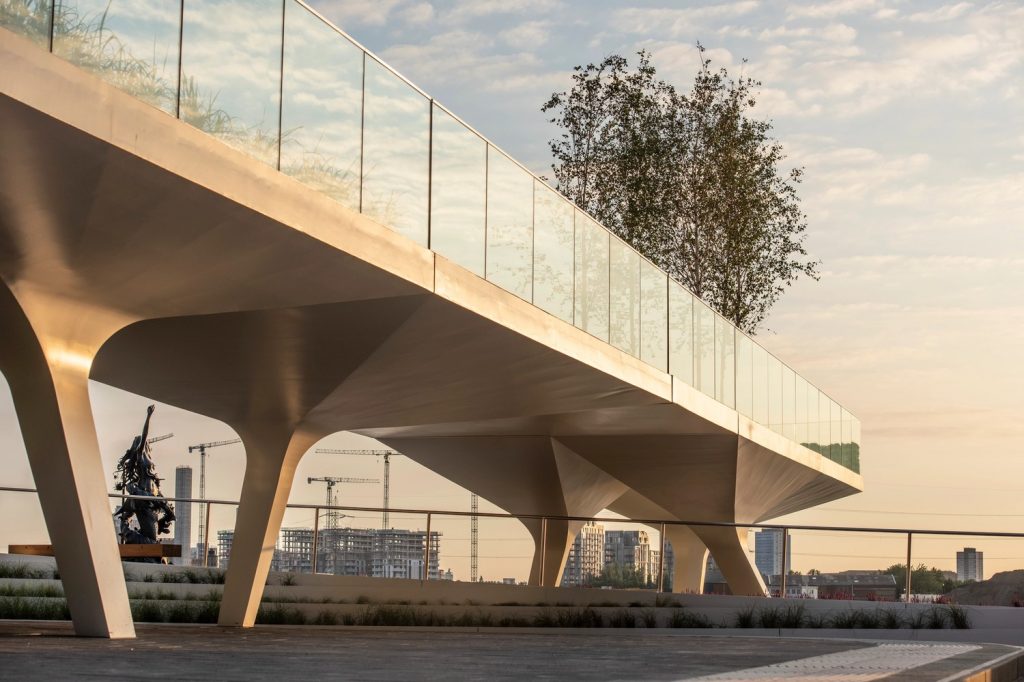
The Tide by Diller Scofidio + Renfro in collaboration with Neiheiser Argyros
London-based Diller Scofidio + Renfro collaborated with Neiheiser Argyros and landscape architects GROSS.MAX to design The Tide, a 5-kilometre long layered network of public spaces and gardens located on the Greenwich Peninsula alongside London’s river Thames. This elevated linear park is conceived as a ‘destination for art, design, and well-being’ freely accessible to all and is intended for running, walking and meditation. The Tide is simultaneously a running track, a walking promenade, a series of quiet gardens, and a network of social and cultural hubs.
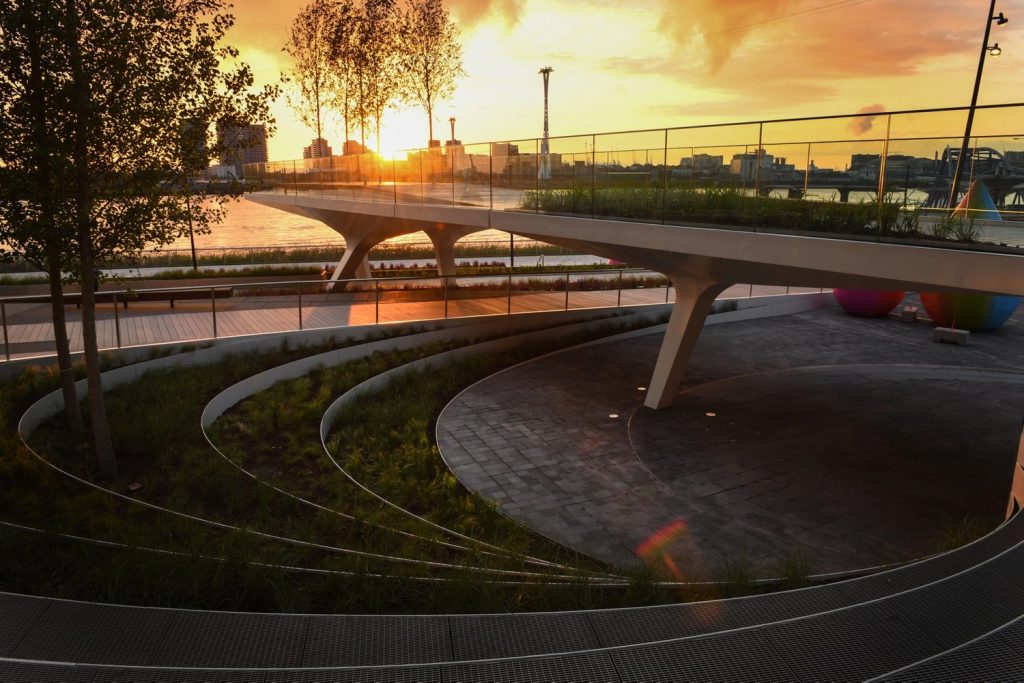
The Tide by Diller Scofidio + Renfro in collaboration with Neiheiser Argyros
The Tide is designed as a series of elevated, landscaped islands where the public is invited to slow down and enjoy the views of the river. Each island is distinct, defined by unique trees and planting, and by their surrounding views and sounds.
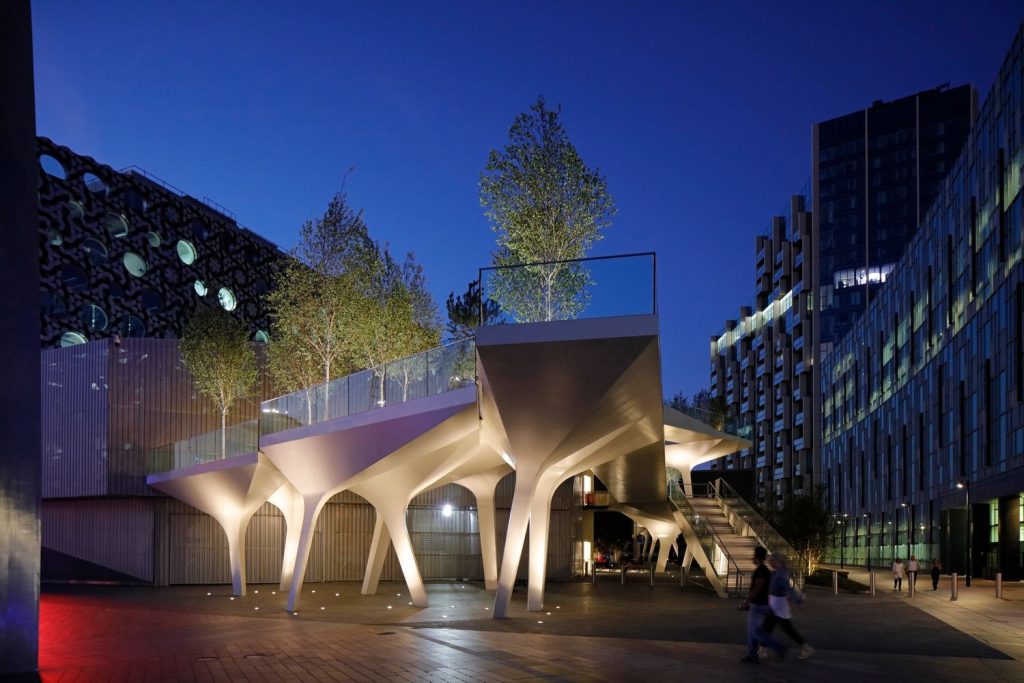
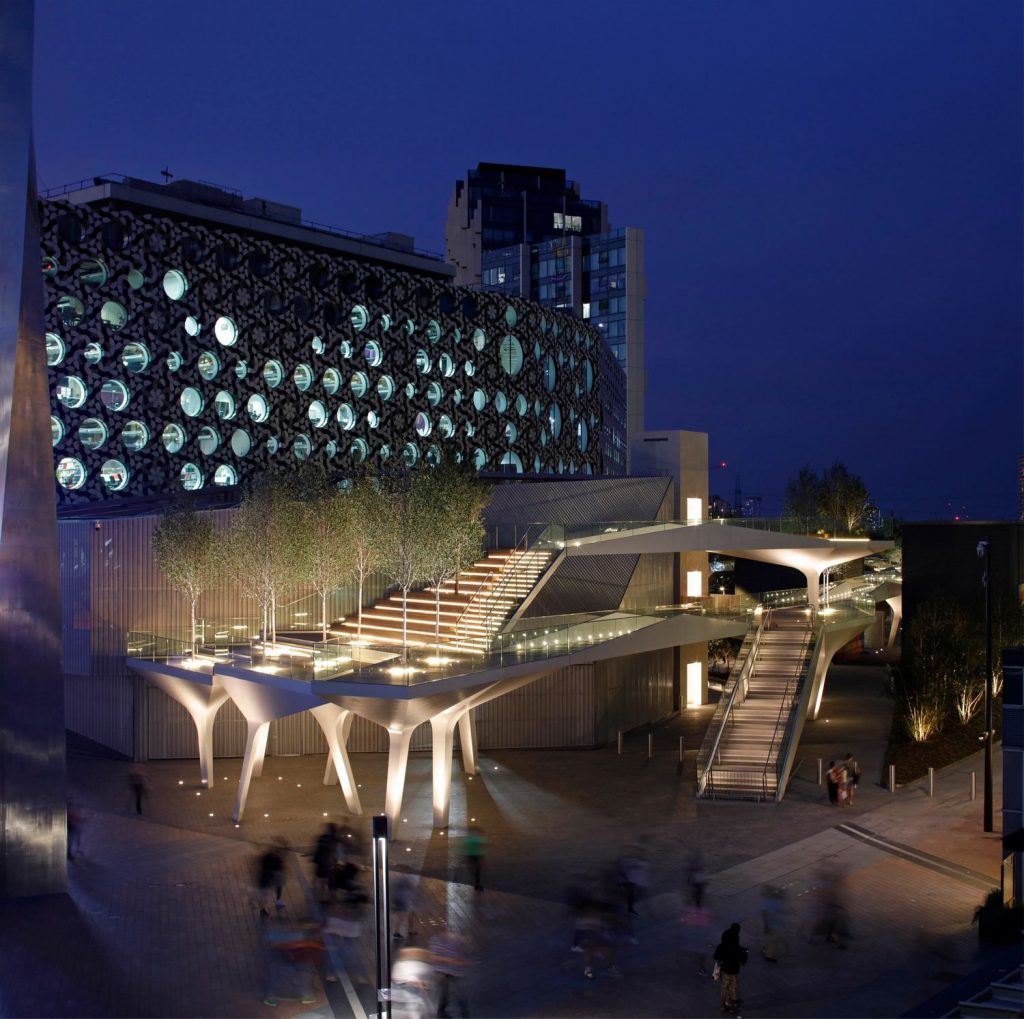
The Tide by Diller Scofidio + Renfro in collaboration with Neiheiser Argyros
The elevated gardens are designed as clusters of sculptural supports with integrated systems for lighting, electrical distribution, data, and landscape (vegetation, soil, water supply and drainage). The tripod-like structures fabricated using parametric software support the elevated gardens and walkways above, while creating canopies for shelter and reflected illumination at the ground level. The islands are connected by prefabricated steel bridges forming a continuous 2.4m wide path with spans up to 26 meters.
Opened to the public in July 2019, the first phase of the project is 1 kilometre long, and features a linear public walkway, elevated gardens, pocket cafes, and contributions from Damien Hirst and Morag Myerscough, among others.

The Tide by Diller Scofidio + Renfro in collaboration with Neiheiser Argyros
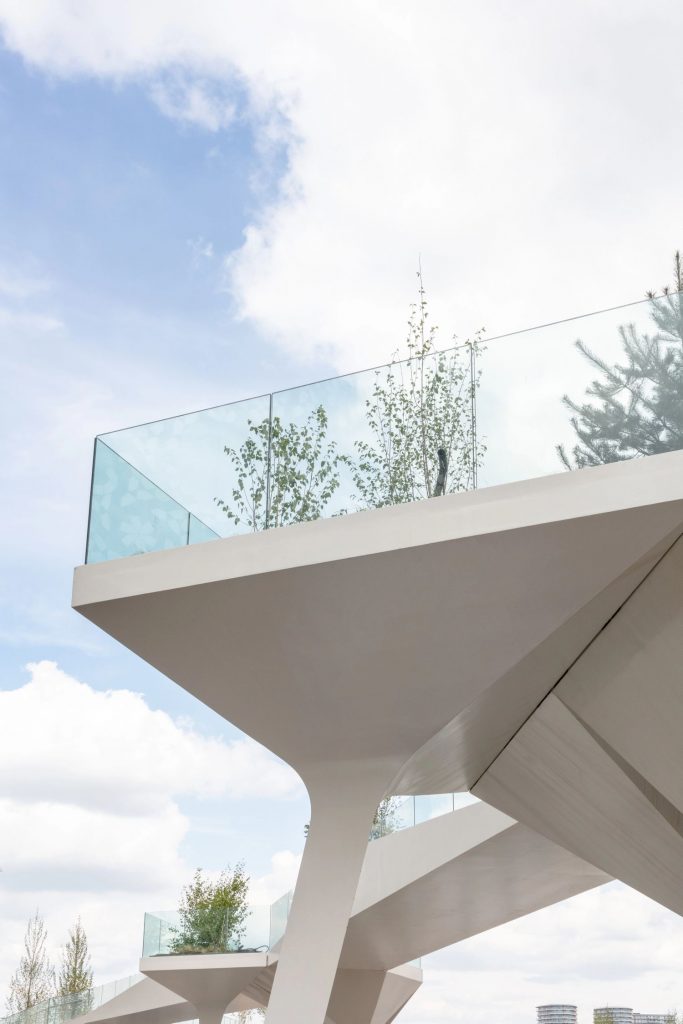
The Tide by Diller Scofidio + Renfro in collaboration with Neiheiser Argyros
The planting of The Tide adapts to the landscape of the local context that it passes through. The overall framework of tree planting features native birch and pine at both the ground and elevated levels and has been optimized to create comfortable micro-climates that take wind studies into account.
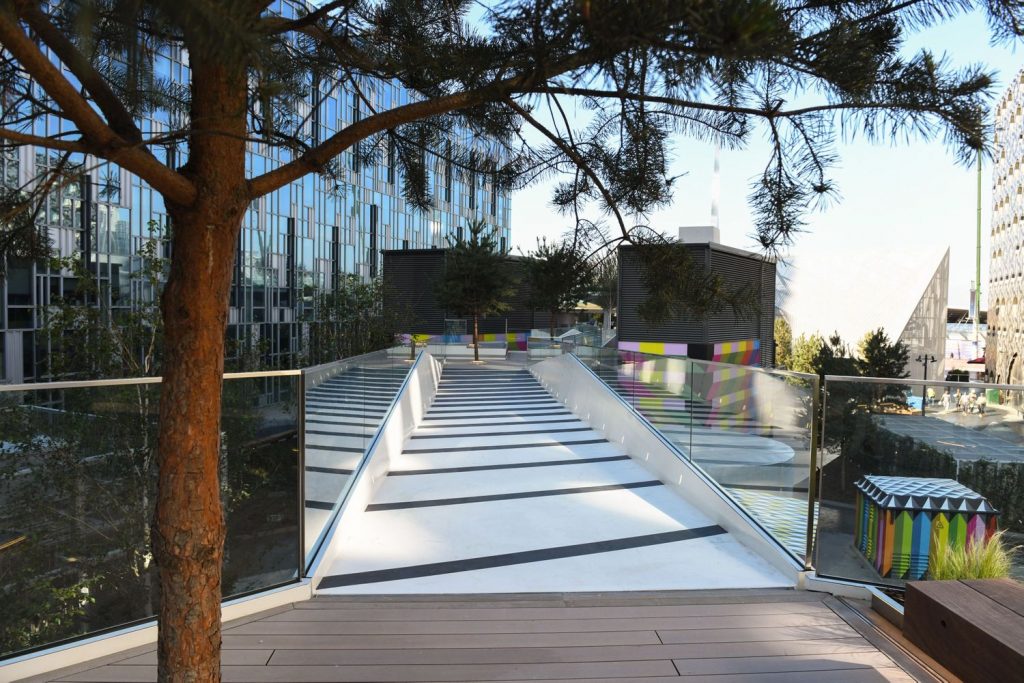
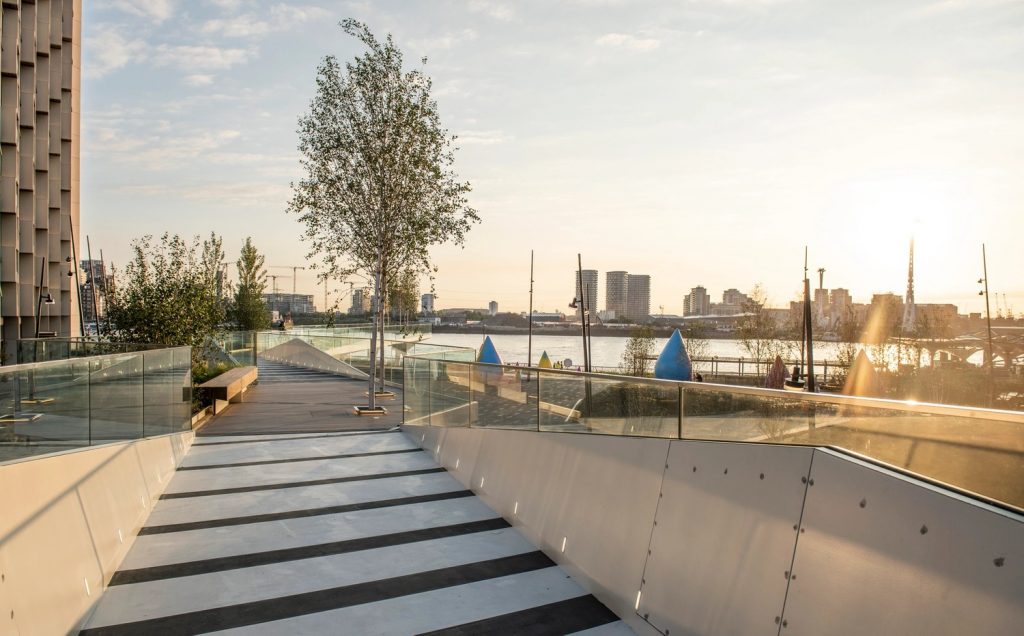
The Tide by Diller Scofidio + Renfro in collaboration with Neiheiser Argyros
A continuous black and white striped pattern of epoxy for elevated level and asphalt and granite paving stones for the ground level establishes a bold visual experience of The Tide and serves as a wayfinding tool.